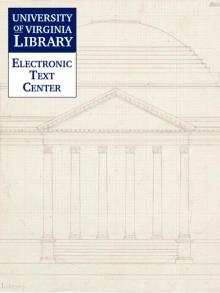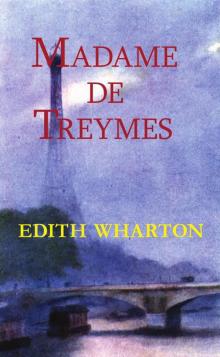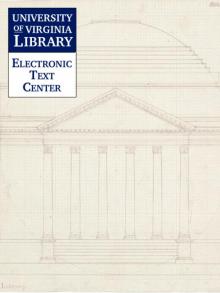- Home
- Edith Wharton
Roman Fever and Other Stories
Roman Fever and Other Stories Read online
Thank you for downloading this Scribner eBook.
* * *
Join our mailing list and get updates on new releases, deals, bonus content and other great books from Scribner and Simon & Schuster.
CLICK HERE TO SIGN UP
or visit us online to sign up at
eBookNews.SimonandSchuster.com
Contents
Introduction by Cynthia Griffin Wolff
Roman Fever
Chapter I
Chapter II
Xingu
Chapter I
Chapter II
Chapter III
The Other Two
Chapter I
Chapter II
Chapter III
Chapter IV
Chapter V
Souls Belated
Chapter I
Chapter II
Chapter III
Chapter IV
Chapter V
The Angel at the Grave
Chapter I
Chapter II
Chapter III
The Last Asset
Chapter I
Chapter II
Chapter III
Chapter IV
Chapter V
Chapter VI
Chapter VII
After Holbein
Chapter I
Chapter II
Chapter III
Chapter IV
Chapter V
Chapter VI
Autres Temps . . .
Chapter I
Chapter II
Chapter III
Chapter IV
Chapter V
Chapter VI
About Edith Wharton
Introduction
by Cynthia Griffin Wolff
PERHAPS the most remarkable thing about Edith Wharton’s fiction is the wide range of subjects it addresses. Some of the full-length novels, like Ethan Frome and Summer, deal with the natives of the impoverished New England hill country. Others, like The House of Mirth and The Custom of the Country, chronicle the sweeping ruthlessness of America’s turn-of-the-century nouveaux riches—an insensitive horde that plundered and vandalized wherever there was a profit to be made. Still others, like The Age of Innocence, scrutinize the rigid pieties of New York’s fading “aristocracy,” the Yankee and Dutch families whose money and power declined after the Civil War. Wharton wrote a “problem” novel about a New England mill-town (The Fruit of the Tree); she wrote a war novel (A Son at the Front); she even wrote a murder novel of sorts (Twilight Sleep). Wharton has often been characterized as a superb satirist; and although it is true that there is a powerful satiric element in most of the major fiction that she wrote, there is something else as well, something more subtle, perhaps, and more delicate: the capacity to understand the nuances of human pain. Much of Wharton’s satire proceeds by demonstrating the ways in which a corrupt social system will inevitably distort character and curtail the possibility for happiness. Indeed, perhaps the universal characteristic in all of Wharton’s work is a profound concern with the ever-changing relationship between individual liberty and social context.
Wharton wrote scores of short stories, and they draw upon the full range of the full-length fictions; what is more, within the context of these more limited works, she was able to experiment with still other forms (she wrote a substantial number of “ghost stories,” for example). All bear her unique stamp—a scrupulous attention to the interplay between individual character and the society that works to shape and constrain it; yet in the shorter fictions, the scope is necessarily more narrow. Thus while a novel can sweep through long periods of time and many strata of society, the short stories generally focus upon a single crucial insight: sometimes this insight is available to the characters themselves (often tragically so); at other times, however, only the reader is able to comprehend the full implications of the small drama that has been played out within the tale.
“After Holbein” is something of a tour de force, a story in which the characters can comprehend little or nothing of their actual circumstances (circumstances that are revealed slowly and horrifyingly to the reader). One might call it a ghost story, for Anson Warley and Mrs. Jasper are but phantoms of a time long past, some species of the living dead. Yet the story does more than merely shock the reader; it raises interesting questions about the spectral world in which these aged shadows enact their drama. What were its values? Are the customs to which the couple cling an adequate or complete rendering of the full amplitude of the now-vanished society in which they spent the better part of their lives, or are Anson Warley and Mrs. Jasper doomed to this form of minor madness because they failed to grasp those elements of their background that might have provided some enduring value?
The short New England tale “The Angel at the Grave” raises some of the same questions (and indeed, might also be deemed a kind of ghost story). One “ghost” is the reputation of the once-distinguished scholar Orestes Anson. Yet there is possibly another “ghost” here, the young woman who “had been born, as it were, into a museum, and cradled in a glass case with a label; the first foundations of her consciousness being built upon the rock of her grandfather’s celebrity.” Angels at a grave are generally pieces of sculpture, graceful and unchanging figures in stone; and it is, perhaps, to this fate that Paulina is eventually brought. Other American authors like Jewett and Freeman had written poignantly about the fate of rural spinsters. Wharton’s story gives the conventional formula a wry twist. Did Paulina sacrifice her own life for a noble cause, or is she—despite the lofty trappings of academic distinction—really no more than the counterpart of those other lonely New England women?
The remaining stories in this collection focus upon the urban and the cosmopolitan worlds. “Xingu” may be the most lighthearted piece of satire Wharton ever wrote. It takes aim at pretentiousness, snobbishness, and above all the kind of “gotten-up learning” that tries to pass itself off as “culture.” Yet even “Xingu” has a sober side and one which is characteristic of much in Wharton’s best work. The shallow group who have erected false standards of self-esteem are all women: one might even say (after a merely superficial reading of the tale), that Wharton had a paradoxically anti-feminist streak in her work. Yet what may seem to be misogynism is, in fact, a subtle, often brilliantly compelling form of satire.
As a woman writer, Wharton did not have direct access to the arenas of power; the women of Wharton’s era rarely became doctors or lawyers or business people, and at a time when the stock exchange in New York seemed to many the very center of the universe, women were explicitly barred from it. Thus, if a woman wished to write social satire, she was constrained to demonstrate the ways in which a corrupt public world eventually disrupted the domestic world. This might seem a crippling handicap; however, in Wharton’s deft hands, it became a strength. Precisely because they had very little real power in the fast-paced world of high finance or international government, women were often the most brutally wounded casualties of duplicity, brutality, and greed in the society as a whole. Wharton created any number of heroines who are difficult to admire (however much we may sympathize with their plight). Lily Bart in The House of Mirth is passive, indecisive, and narcissistic; Undine Spragg in The Custom of the Country is manipulative, callous, and crudely ambitious. Insofar as a reader is called upon to judge them, the conclusion would have to lean strongly in the negative direction. Yet Wharton would enjoin the intelligent and perceptive reader to make a further observation. Each of these women is, in large measure, the product of a society in which she must live, but over which she has little or no control. Thus the flaws in such women—the grotesque mutilation of character that they display—become a measure of
the moral disease that has permeated the environment that spawned and nourished them. Fully conscious of her own method, Wharton described it in her autobiography, A Backward Glance:
In what aspect could a society of irresponsible pleasure-seekers be said to have, on the “old woe of the world,” any deeper bearing than the people composing such a society could guess. The answer was that a frivolous society can acquire dramatic significance only through what its frivolity destroys. Its tragic implication lies in its power of debasing people and ideals. The answer, in short, [to the problem of focusing the satire], was my heroine, Lily Bart.
Not surprisingly, Wharton uses the same method in her short stories. The women’s club in “Xingu” is a parody of any authentic intellectual activity, and its members are self-deceiving and silly and vain. Yet one must, perhaps, ask a larger question about even this frothy little tale. What alternatives were they offered? Were they silly by choice—by laziness and default; or would some more strenuous scholarly ambition on their part be inevitably doomed to defeat by society’s restrictions concerning “proper” activities for females?
The poignant tale of Alice Waythorn presents the case in its boldest and bleakest mode. Within the story, it is her husband who has the shocking and unwelcome realization: “She was ‘as easy as an old shoe’—a shoe that too many feet had worn. Her elasticity was the result of tension in too many different directions. Alice Haskett—Alice Varick—Alice Waythorn—she had been each in turn, and had left hanging to each name a little of her privacy, a little of her personality, a little of the inmost self where the unknown god abides.” Yet he cannot make the one step further to complete the insight; he was not the victim of this violation—he was a perpetrator of it and one of the trio of men who benefited from it. And it is these men, not the vague and dimly fashioned woman whom each had married in turn, that shaped the society in which such violations could become the norm.
“Roman Fever,” perhaps Wharton’s single most popular short story, also deploys this mode of satire by refraction. Mrs. Slade and Mrs. Ansley have been competing with each other for more than twenty years; now their daughters, Babs and Jenny, are continuing the competition. Yet the stakes are not clear (as they might be in a business transaction), nor is the eventual outcome. Who was the winner in this convoluted game? Within the fiction, the women perceive each other quite imperfectly. Can an astute reader make a more accurate assessment? It is a bold stroke on Wharton’s part to have the story conclude with a startling revelation. For what, in the end, are we to infer? Can there ever be a winner in a competition that has been defined in the way this one has?
“Souls Belated,” “Autres Temps . . .,” and “The Last Asset” are the most ambitious pieces here, for all address a complex and ultimately unsolvable paradox. On the one hand, all human beings require some relatively stable social system within which “identity” can be defined; we need significant and well-defined roles to play, and we need rules and standards to guide our judgment and shape our actions. Above all, perhaps, we need the assurance of order and continuity that only a coherent community can provide. On the other hand, the rules of any effective social system will inevitably limit our behavior. Some (like the prohibition against murder or theft) seem so clearly necessary that people scarcely ever question their validity. However, the validity of other rules is less clear, for they may have both a positive and a negative element. The marriage contract, for example, can serve to facilitate the kind of trust and commitment between a man and a woman that is the only basis for a vital and nourishing relationship; it becomes the foundation upon which a child’s well-being often depends; more trivially, perhaps, it simply “signals” to other people that a particular man and woman have the right to intimacy, privacy, and respect. Yet the very arrangement that ought to offer support is sometimes cruelly constraining. When love has ceased, men and women sometimes violate the network of rights and obligations that marriage has conferred upon them; sometimes they are driven to the extremity of dissolving the contract altogether. Yet such a sundering of social order is never without painful consequences: children are divided in their loyalties; friends and acquaintances are thrown into uncertainty about how to respond; and even the parties who sought “freedom” may find its consequences almost as painful as the constrictions of an unhappy marital union.
Could society exist without binding marriages? The result might be a chaotic state in which identity itself could not be sustained. Should men and women be forced to remain in marriages that have sunk into irretrievable misery? The result might be a desolation and despair so profound that even life itself loses value. Can a “rule” be formulated that will precisely define the circumstances under which this contract can be broken—a rule that can cover all the concomitant disruptions and uncertainties? Probably not. Thus this most delicate and intimate of society’s regulations must remain agonizingly uncertain, the benefit in each case measured against the loss, with no easy or comprehensive answer readily available. We require the marriage contract, and at the same time we are painfully—perhaps intolerably—constrained by it. Some such paradox as this lies at the heart of “Souls Belated,” “Autres Temps . . .,” and “The Last Asset.” And each of these stories concludes not with an answer, but with an intriguing set of questions.
In “Souls Belated,” Lydia and Gannett have decided to flout society’s restrictions: Lydia has left her husband to enjoy “freedom” with the man she truly loves. Yet even as the story begins, the reader realizes that “freedom” has brought at least as much discomfort as it has brought joy. The lovers are sharing a compartment on a European train with a fellow passenger, and when he gathers himself to go, thereby leaving them in what might be cozy and romantic intimacy, “Lydia’s eye regretfully followed the shiny broadcloth of his retreating back till it lost itself in the cloud of touts and cab-drivers hanging about the station; then she glanced across at Gannett and caught the same regret in his look. They were both sorry to be alone.” Having fled the restrictions of society, Lydia and Gannett feel a perverse need for the presence of others: being together and in love is somehow not enough. To some extent the problem is superficial. A conversation à deux can be delightful, perhaps, only when it has been snatched out of the buzzing world of friends’ gossip and the clamoring want of family members. Gannett is more willing than Lydia to give voice to the dilemma; having renounced the rule-bound context of their former lives, they must discover or create another context. “We can’t travel forever, can we?” he asks. Yet the problem of context is only one component of their increasing discomfort. Lydia feels herself to be a “compromised” woman; that is, even though virtually none of the people they meet have the least glimmering of the situation, she has so absorbed the values of the world in which she was reared that she carries its injunction within her. No flight from that world can ever expunge its values from her sense of self. Thus she is left in a peculiar quandary. If Gannett marries her, she can never be certain that he has done so “freely.” He may love her and wish to declare that love by pledging a lifelong fidelity; however, he may merely feel guilty at having placed her in so awkward a situation—may marry her out of pity or a sense of duty. Moreover, she reflects pensively, if they defied marriage itself by their elopement, are they not merely hypocritical now to submit to marriage as a capitulation of sorts?
This story ends in a set of ambiguities. Do they really “love” each other? Can love even be measured under such irregular and stressful circumstances? And will their marriage be happier than the one Lydia left, or has the pain and disruption all been expended on an empty hope and blasted dreams?
“Autres Temps . . .” also addresses the aftermath of divorce, but it does so with different questions in mind. Its central character, Mrs. Lidcote, had extricated herself from the misery of an unhappy relationship many years before the story opens; and she did so not by running away with a lover, but merely by legally dissolving her marriage during an era when divorce stigmatized a wom
an and caused the members of polite society to shun her company. Thus she has spent a long time alone and pursuing an unobtrusive existence in Europe, having left her daughter Leila in the legal custody of the father. Now these many years later, Mrs. Lidcote has learned that Leila herself has been divorced and remarried, and the mother feels at last that she can be of use to her daughter—can comfort Leila in what must have become a state of exile and unhappiness. Yet an immense surprise awaits her return; Leila seems to require no such comforting: she and her friends bustle about their activities with unperturbed cheerfulness. Husbands and wives can now be discarded or exchanged, it would seem, with no real distress and no apparent loss of society’s acceptance or approval. Times have changed. Mrs. Lidcote’s traumatic experience is the product of a fogotten world and a former time (autres temps). Some major social revolution appears to have taken place. But if it has, its consequences may not extend far enough to affect Mrs. Lidcote’s situation; for although Leila does not suffer reprisal for her behavior, people still seem to remember her mother’s “shameful behavior,” and for reasons that are not altogether explicable, they still treat her as something of an outcast—or so she feels. Is it she who cannot change, or has change not been so sweeping as it first appeared? And insofar as standards have altered, have they altered for the better: is the easygoing attitude Leila and her friends adopt toward their own marriages really a sign of “progress”? Can it be that the notorious Mrs. Lidcote can find some sort of happiness now? The story raises all these questions and more, but readers must formulate the answers for themselves.
“The Last Asset,” yet another story concerning the aftermath of divorce, focuses not upon the divorcing couple, but principally upon the child—lovely Hermione Newell. Hermione’s mother—brash, coarse-minded, and unscrupulous—has come to the conclusion that her daughter is her “last asset,” the last valuable item Mrs. Newell has to offer the world in exchange for readmittance. If the daughter marries into a distinguished, highly respectable family, her mother will once again have some “place” in society. Thus Mrs. Newell is passionately concerned to have Hermione marry the Comte Louis du Trayas, a young man who has proposed to her, but whose family looks upon the marriage with misgivings. Wharton’s story is narrated from the point of view of a disinterested outsider, Paul Garnett, to whom Mrs. Newell has appealed for assistance in bringing the negotiations to a successful conclusion. At first, Garnett is merely repelled by the mother’s callous attitude toward her innocent, likable child. What possible good could be served, he wonders, by sacrificing Hermione in this way? Yet as the story moves along, he begins to realize that the situation is vastly more complicated that he has supposed. The young woman and her suitor appear to be genuinely in love, and the repugnant errand upon which the mother has sent him takes on a somewhat different tone. Probably no clear moral definition of his role is possible. If he aids Mrs. Newell in her unscrupulous use of the girl, he will bear some responsibility for the triumph of tawdriness: the mother’s ruthless use of Hermione will go unpunished—will indeed be rewarded. If he refuses aid, the girl herself might suffer terribly. The story concludes, then, not with a tidy answer, but with a series of questions, both for Garnett and for the reader.

 The Age of Innocence
The Age of Innocence The Reef
The Reef Summer
Summer The Glimpses of the Moon
The Glimpses of the Moon Xingu
Xingu The Fruit of the Tree
The Fruit of the Tree Fast and Loose
Fast and Loose Artemis to Actaeon and Other Verse
Artemis to Actaeon and Other Verse The Line of Least Resistance
The Line of Least Resistance The Lamp of Psyche
The Lamp of Psyche The Reckoning
The Reckoning Afterward
Afterward The New York Stories of Edith Wharton
The New York Stories of Edith Wharton The 2014 Halloween Horrors Megapack
The 2014 Halloween Horrors Megapack 'Copy': A Dialogue
'Copy': A Dialogue The Recovery
The Recovery The Fulness of Life
The Fulness of Life Early Short Stories Vol. 1
Early Short Stories Vol. 1 Tales of Men and Ghosts
Tales of Men and Ghosts The House of the Dead Hand
The House of the Dead Hand That Good May Come
That Good May Come The Buccaneers
The Buccaneers Other Times, Other Manners
Other Times, Other Manners The Hermit and the Wild Woman
The Hermit and the Wild Woman Kerfol
Kerfol The Duchess at Prayer
The Duchess at Prayer Bunner Sisters
Bunner Sisters The Choice
The Choice Madame De Treymes
Madame De Treymes Ethan Frome, Summer, Bunner Sisters
Ethan Frome, Summer, Bunner Sisters In Morocco
In Morocco The Valley of Decision
The Valley of Decision Age of Innocence (Barnes & Noble Classics Series)
Age of Innocence (Barnes & Noble Classics Series) The Angel at the Grave
The Angel at the Grave April Showers
April Showers Sanctuary
Sanctuary The Bunner Sisters
The Bunner Sisters Mrs. Manstey's View
Mrs. Manstey's View Writing a War Story
Writing a War Story The Custom of the Country
The Custom of the Country In Trust
In Trust The Triumph of the Night
The Triumph of the Night The Hermit and the Wild Woman, and Other Stories
The Hermit and the Wild Woman, and Other Stories Roman Fever and Other Stories
Roman Fever and Other Stories The Mission of Jane
The Mission of Jane The Descent of Man and Other Stories
The Descent of Man and Other Stories Coming Home
Coming Home The Touchstone
The Touchstone Early Short Stories Vol. 2
Early Short Stories Vol. 2 Edith Wharton's Verse, 1879-1919, from various journals.
Edith Wharton's Verse, 1879-1919, from various journals.